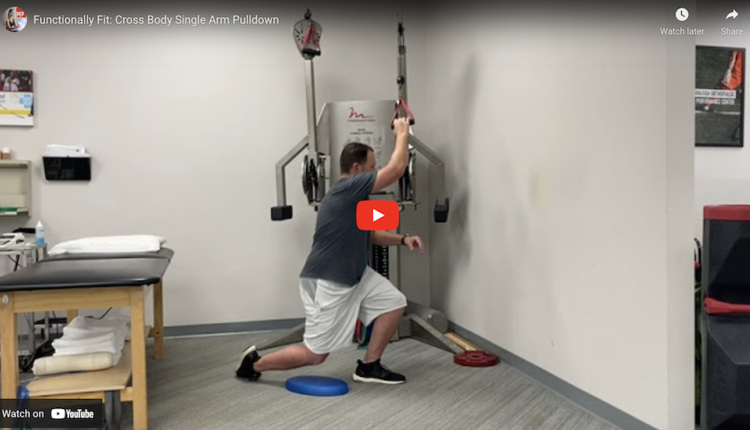Glute bridges are a staple in hip and posterior chain strengthening programs. It is important to recognize how to progress or regress bridge based on the ability to control and maintain proper pelvic positioning.


Execution:
Begin in a traditional glute bridge position. Position the arms on the floor by the side. Next, lift the toes up off the floor and drive through the heels to lift off the floor. Pause at the top, while keeping a straight line from the ears to the hips, and then return to the starting position. Repeat for 2-3 sets of 10 repetitions or for a desired time period.
Progressions:
1. Double leg bridge with the arms across the chest
2. Double leg bridge with the palms together with the arms extended perpendicular to the body
3. Double leg isometric bridge with alternate leg knee extensions
4. Single leg bridge (using the same arm positions referenced above)
Note:
With the arms at the side in the palm down position, it is easier to engage the lats to assist with pushing off the floor. To a lesser extent, the same is true with the palms up. Taking the arms off the floor, reduces stability and eliminates upper body assistance, thereby forcing the glutes to work harder. In addition, single leg support forces the gluteus medius to fully engage to resist unwanted pelvic motion.
Application:
This exercise series will enhance glute strength and hip/core stability. Keep in mind the gluteus medius is responsible for contralateral pelvic stability and anti-rotational control. Using the alternate leg knee extension and single leg progressions will challenge the glutes more, while also readily identifying any asymmetrical weakness. Observe any pelvic drop during the bridge, utilize proper cues to maintain form and adjust the level of difficulty accordingly.





















